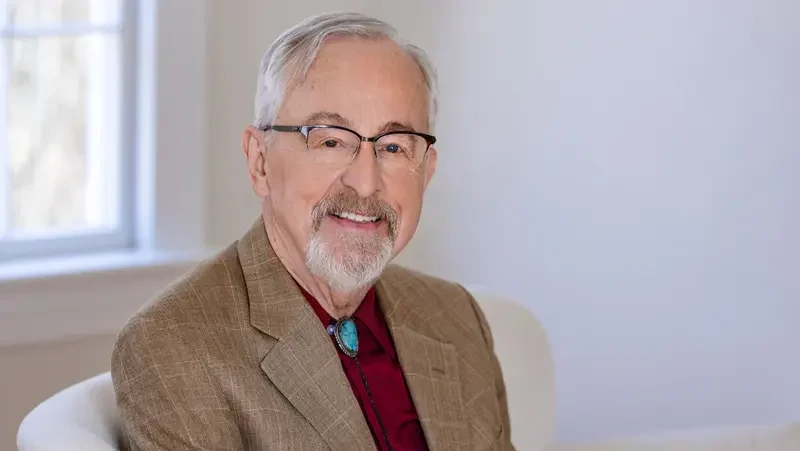At the Massachusetts Institute of Technology (MIT), an institution renowned for its intellectual rigor and innovation, Richard C. Larson’s journey is nothing short of extraordinary. As the Mitsui Professor at MIT’s Institute for Data, Systems, and Society (IDSS), Larson has carved out an illustrious career marked by groundbreaking research, transformative educational contributions, and a deep commitment to applying his work to real-world problems. From his early days as an undergraduate to his current role as a globally recognized leader in Operations Research, Larson’s career serves as a testament to the power of intellectual curiosity, interdisciplinary collaboration, and a lifelong dedication to learning.
“I started MIT as an 18-year-old freshman,” Larson recalls with a smile, reflecting on his journey that began in 1961. “At the time, I didn’t know what I wanted to major in, but my fraternity’s upperclassmen—who were all men at the time—suggested I pursue Electrical Engineering. They said it would leave all doors open for me in the future. It felt right, especially since my father, Gilbert C. Larson, was an accomplished electrical engineer.”
The influence of his father, an honors graduate of the University of Washington and a longtime employee of Westinghouse Corporation, was profound. Larson’s childhood was filled with “electrical things” brought home by his father, including a soundproof basement room to play rock-and-roll music at high volume. This environment of technical curiosity sparked Larson’s interest in engineering. However, as his academic journey progressed, Larson’s passion for physics led him to a pivotal shift in direction, setting the stage for his future in Operations Research—a field that, as he describes it, models the physics of the world.
Larson’s academic excellence was undeniable. His perfect score on the SAT Advanced Physics Test secured him a spot at MIT, where he would later earn his undergraduate degree in Electrical Engineering, followed by a Master’s and Ph.D. in Operations Research. The decision to pursue Operations Research, a field often described as the “World’s most important invisible profession,” would prove to be one of the most defining choices of his career.
Defining Moments and Milestones at MIT
Larson’s journey at MIT has been marked by several defining moments, each of which shaped his path and further solidified his commitment to both academic and practical applications of Operations Research.
“I remember the moment I received my acceptance letter,” Larson shares. “I was sitting in my backyard in Needham, Massachusetts, and when I read the letter, I thought it was a mistake. I didn’t believe they could have actually accepted me.” This moment, however, marked the beginning of a lifelong relationship with MIT—a relationship that would span his undergraduate, graduate, and faculty years.
A key milestone came before Larson even entered his first class at MIT. He was accepted into the MIT-based fraternity Phi Beta Epsilon (PBE), which provided mentorship that proved invaluable during the rigors of MIT’s demanding academic environment. “Those upperclassmen at PBE were wonderful mentors,” Larson says. “Without their guidance, I don’t think I could have navigated the challenges of MIT so successfully.”
Another pivotal moment in Larson’s career occurred when he was still a first-year graduate student at MIT. “I was carrying a bunch of books related to criminal justice, and my advisor, Professor Alvin W. Drake, asked me about them,” Larson recalls. “I told him I wanted to explore how to identify and locate criminals, and he was intrigued. He encouraged me to explore this as part of my graduate research.” This led to Larson’s involvement in the President’s National Crime Commission, where he became the youngest member of the Science and Technology Task Force. At just 23 years old, Larson was already making significant contributions to the field of criminal justice.
Larson’s career at MIT also included leadership roles, such as serving as Co-Director of the MIT Operations Research Center and creating MIT BLOSSOMS (Blended Learning Open Source Science or Math Studies). This free, online platform for educational content continues to impact students worldwide, offering accessible lessons in science and math.
The Evolution of Education and Leadership
Throughout his tenure at MIT, Larson has witnessed the evolution of education, particularly the relationship between theoretical research and practical application. In his view, Operations Research thrives on the integration of both. “There is no conflict between theory and practice,” Larson affirms. “Operations Research requires ‘Boots-on-the-Ground’ knowledge, and postulated models from one’s office won’t always cut it. I’ve always enjoyed doing both—building theory while simultaneously working on real-world problems.”
As the field of education continues to evolve, Larson has observed significant shifts, especially in the integration of technology and the rise of artificial intelligence (AI). “AI is both a blessing and a curse,” Larson notes. “On one hand, AI allows humans to expand what we can do, but on the other hand, it can be hijacked to falsely represent human work. AI-enabled homework without proper attribution is a growing concern.”
Larson’s dedication to ensuring that students learn how to think critically and engage in lifelong learning remains a central tenet of his educational philosophy. “True learning lasts a lifetime,” he asserts. “It’s not about memorizing facts for a quiz; it’s about developing the ability to think critically and adapt over time. This skill is essential for a fulfilled, successful life.”
Achievements and Recognition
Throughout his distinguished career, Larson has received numerous accolades and recognitions. One of his proudest achievements was the publication of his Ph.D. thesis, which was later transformed into a book titled Urban Police Patrol Analysis. The work earned Larson the prestigious Frederick W. Lanchester Prize for Best Publication from the Operations Research Society of America in 1972. His co-authorship of the textbook Urban Operations Research with Professor Amedeo Odoni has had a lasting impact, with over 1300 citations and translations into multiple languages.
Larson’s work in the field of queueing theory, particularly his development of the Hypercube Queueing Model, has been cited over 900 times. His contributions to emergency systems management, such as improving the 911-Emergency-Call System in New York City, have had far-reaching real-world impacts.
He has been honored with numerous awards, including the INFORMS President’s Award, the Kimball Medal, and the Daniel Berg Medal for Lifetime Achievement in Technology Innovation and Service Systems. His induction into the National Academy of Engineering (NAE) is a testament to his lasting influence on the field.
“I’ve been very fortunate in my career,” Larson reflects. “I’ve had many mentors, but I owe a lot to Professor Alvin Drake and Dr. Alfred Blumstein, who took risks to support my work. They helped shape my path, and for that, I’m forever grateful.”
Future Aspirations and Advice to Future Educators
As Larson enters retirement, his focus is on sharing his expertise with others. His latest project, MODEL THINKING For Everyday Life, a book designed to help individuals make smarter decisions, is a reflection of his ongoing passion for teaching and learning. Through radio and TV interviews, Larson hopes to spread the message of model-focused thinking to a broader audience.
When asked for advice for young educators and future leaders in education, Larson’s message is clear: “Follow your intellectual passions as far as they will take you. Don’t be afraid to explore new territories—you may just transform the profession in the process.”
Balancing his professional responsibilities with his personal life has never been a challenge for Larson, who views both aspects as mutually supportive. He fondly remembers the intellectual partnership he shared with his wife, Mary Elizabeth “Liz” Murray, who passed away two years ago. “Liz and I were intellectual partners in many of our endeavors,” Larson says with emotion. “She was always there for me, and together, we made a lasting impact.”
In all his work, Larson’s legacy is one of commitment to education, innovative thinking, and a passion for solving complex problems that improve lives. His journey at MIT is a shining example of what it means to be both a scholar and a leader.
I’ve always enjoyed doing both—building theory while simultaneously working on real-world problems. Operations Research requires ‘Boots-on-the-Ground’ knowledge, and postulated models from one’s office won’t always cut it.




